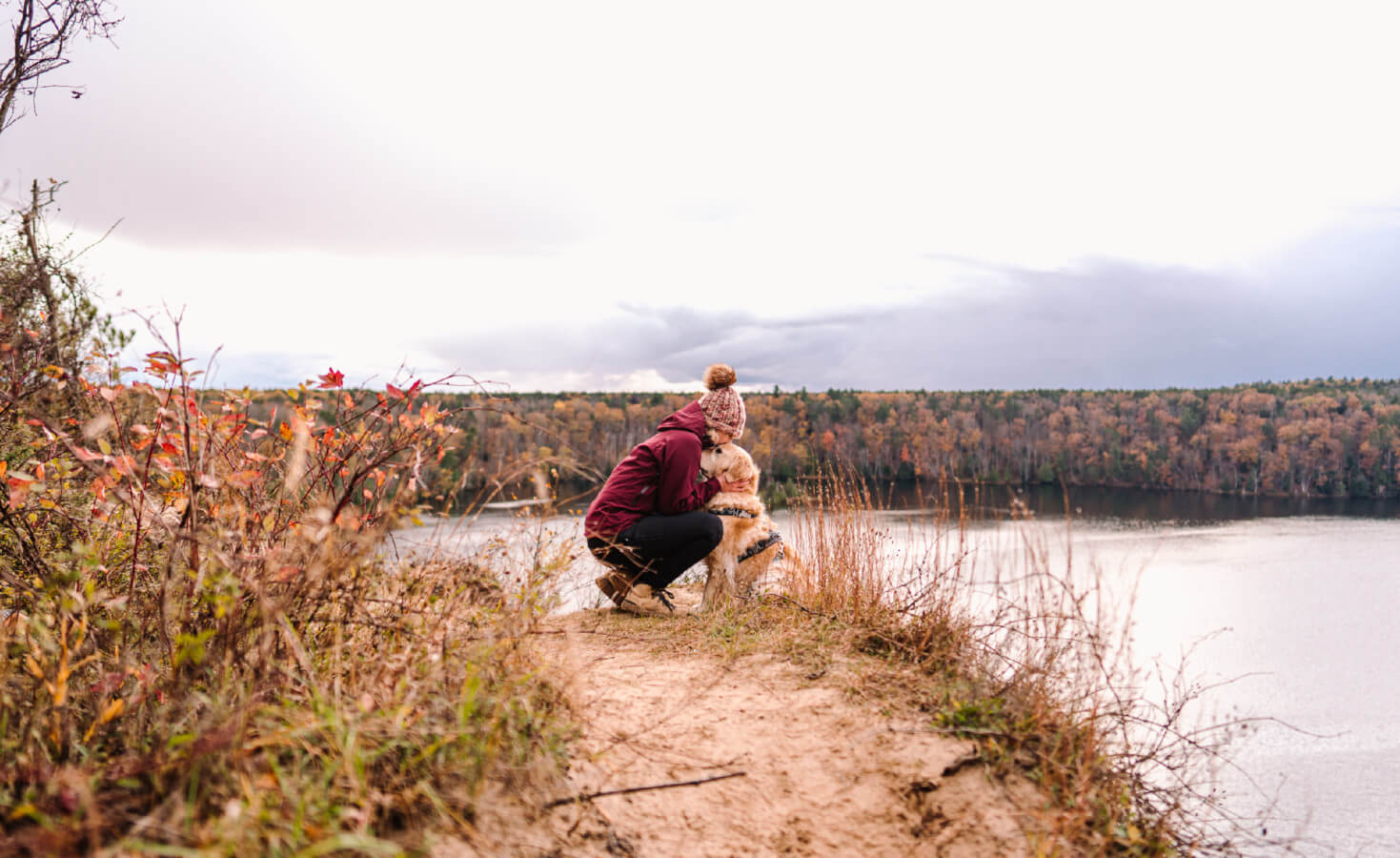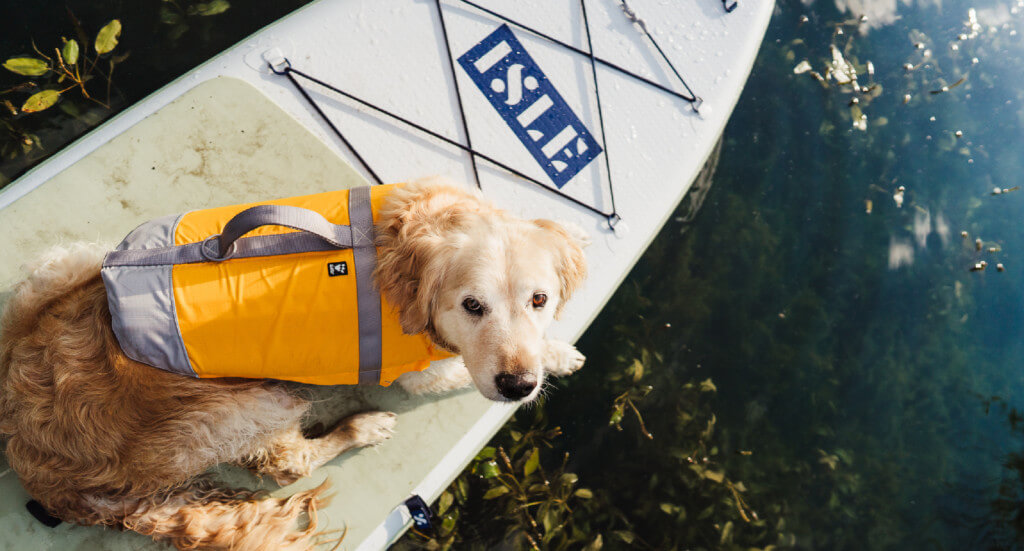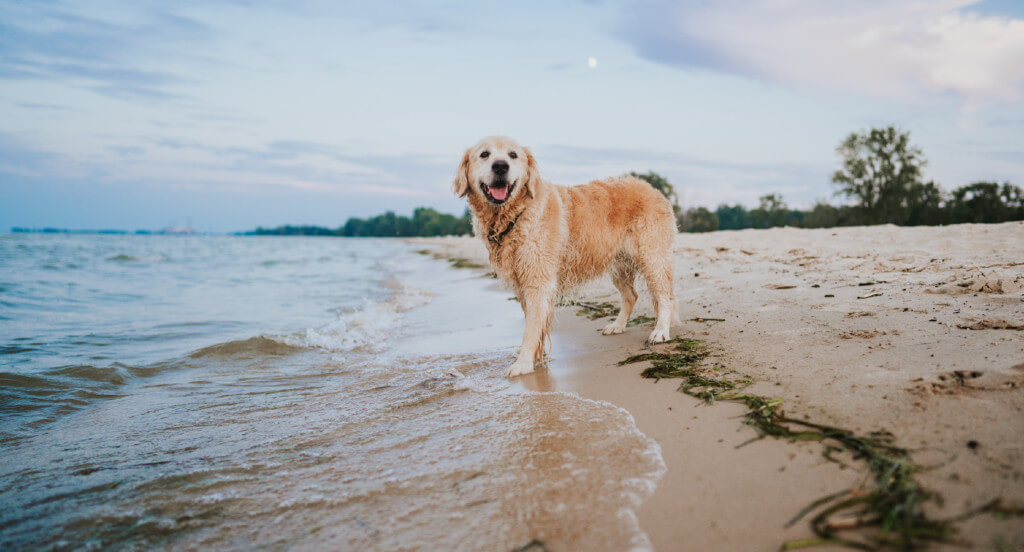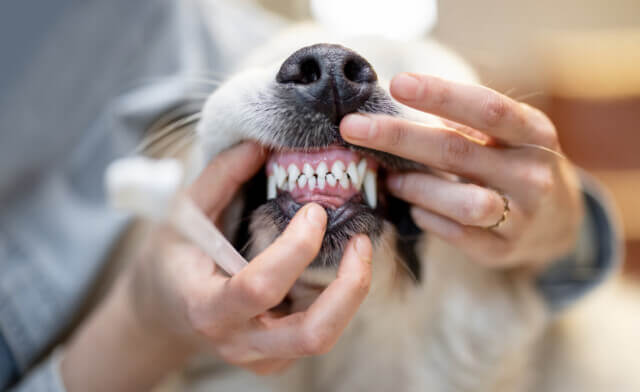Taking Care of a Senior Pet
Time flies by when you’re having fun – and that’s especially true when it comes to our pets. It seems like it was just yesterday when I first met Barley as a 6 month old pup, and now he turns 10 this year – and I find myself wishing I had a reset button more than anything. Like all other dog owners, he’s been there for me through all of my big life changes in my 20s and now 30s, and he’s really the greatest companion and my best friend.

Watching those gray hairs start to pepper his face is hard to see, but it’s important to remember aging is a normal part of life, and at some point all dogs (and cats and humans!) become seniors. I have been vigilant about setting him up for success in his (quite literally) golden years, and we’re happy to share a few tips that have helped him stay healthy.
It’s important to remember that senior dogs have different care requirements than adult dogs and puppies – and in order to provide the best possible senior dog care and keep them here with us as long as possible, there’s a few steps you can take to keep them happy, healthy, and comfortable.
First and foremost, find and keep a good relationship with your vet
You’ve heard about how 1 year of human life is actually 7 years of a dog’s life, right? That means that as your dog progresses in age, getting them in to see the vet for a check-up can become really critical. It’s actually even recommended to do a 6 month check-up rather than an annual check-up for senior pets, as so much can change in just a short matter of time.
We have our vet do blood work and run a senior health panel to check white and red blood cells, kidney and liver function, and also thyroid. This not only will alert you to anything that could be happening at an early stage and ensure they are overall healthy, but also will help you to establish baseline numbers for these items for your vet to look back on during each check-up.
It’s also helpful for your vet to be able to get to know your dog and become used to seeing them, as that way they are also able to recognize if anything seems off and may notice things that you may have missed. It’s imperative to have this relationship in case your dog needs anything further medical wise, including pain management, if they have arthritis or joint pain as they age.
Consider switching to a senior dog food
Just like puppies have certain nutritional requirements as they are growing, senior dogs also have different nutritional requirements as they age, so it’s a good idea to get them onto a food for senior dogs. Typically speaking, your dog’s metabolism and activity level will slow down as they grow older, so it is important to factor that into their daily calorie intake to keep them at a healthy weight.
Keeping your dog thin, ESPECIALLY as a senior, is so important as it keeps extra weight off of their joints and also ensures their organs are able to properly function at a normal level. Earthborn does have a few Senior Friendly recipes, including the Weight Control Recipe, Ocean Fusion Recipe, and Adult Vantage Recipe, which are made to support healthy joints and all lower calorie options that make it easier to keep your dog maintained at a healthy weight. I also love adding canned or wet food as it ensures they get added moisture added into their diet, and can also be easier for a senior pet to eat because of the soft texture.
It’s also important to make sure your dog is getting the Omega-3’s and additional joint support that’s needed as they age. While this is typically something that you will find is included in a food recommended for Senior Pets, there are also many supplements you can give to help ensure they are meeting the correct nutritional levels, including a Senior Multivitamin, a Fish Oil Supplement that has Vitamin E included, and finally, a good Hip and Joint Supplement that does have MSM included. It’s best to talk with your vet before starting your dog on ANY new supplement regimen.

Keep them active
Just as it’s important to keep your dog on the proper diet, it’s also important to keep them active, as the two really do go hand-in-hand. Ensuring they get out for daily walks and exercise helps to keep muscle mass and overall stamina and strength at a higher level, which is especially important when you think about supporting their joints and ensuring they don’t become frail as they age and start to slow down.
If your dog doesn’t enjoy getting out as much as they used to, remember to take it slow, and also check with your vet to ensure they aren’t in any pain, as avoiding activities they once loved can be a sign that something is wrong. Barley has bad days and good days, but we were able to come up with an ideal treatment plan in order to keep him pain free and ensure he’s still able to get out and do what he loves (which is playing fetch, hiking and swimming) even though his body is starting to slow down.
It’s also important to keep your dog’s brain active – so don’t stop teaching them new tricks and utilize things like games or puzzle feeders to keep their mind active and bright.
Lastly, make sure you’re aware of your surroundings and be ready to assist your dog if needed on making updates to your home that could help them be more comfortable in the long run. Older dogs typically have a hard time walking on hardwood floors, so make sure you’re ready to lay down rugs or runners to help. Utilizing a ramp is also a good way to help your dog with things that may become tricky down the line, like jumping on the bed or couch or even using the stairs.
Develop a weekly grooming routine
One of the other main things I have really noticed with Bar is how important it is to keep up on daily grooming and care. As your dog ages, so does their skin and coat, and without the proper maintenance, their fur more easily becomes dry and brittle and can mat and tangle.
Daily grooming not only helps to avoid this, but also gives you the chance to check your dog often for any ailments, including irritated skin, hot spots or places that they lick which can be a sign of something bothering them, as well as any bumps that can pop up out of nowhere that you would need to get checked out.
Dental health is also SO important, as issues with the mouth or gums can later lead to more serious conditions, including damage to the heart, lungs and kidneys. Having a regular oral care routine, including daily brushing or utilizing dental chews, helps to cut down on plaque and tartar build-up and leads to an overall healthier dog.

Live in the moment
I am a firm believer that we can learn life’s most important lessons through our pets – and living in the moment, as well as slowing down and ENJOYING it, is really one of the best lessons they have to teach us. Life gets hectic and busy, but regardless of it all, every time I do something small with the dogs, whether it’s a quick game of fetch, a drive to the beach, or just sitting out in the sun and watching the birds together, they make the absolute best of every second – and it’s something I really strive to do in my own life as well.
It can be hard at times to watch them as they age, but who said slowing down was a bad thing? With the right support and proper care (and don’t forget, a whole lot of love) the “golden years” can still be your best years yet that you spend together. Remember, they may only be here for part of our lives as humans, but we ARE their entire life – so make a vow with your pet to enjoy every day you can and make the best of it!




